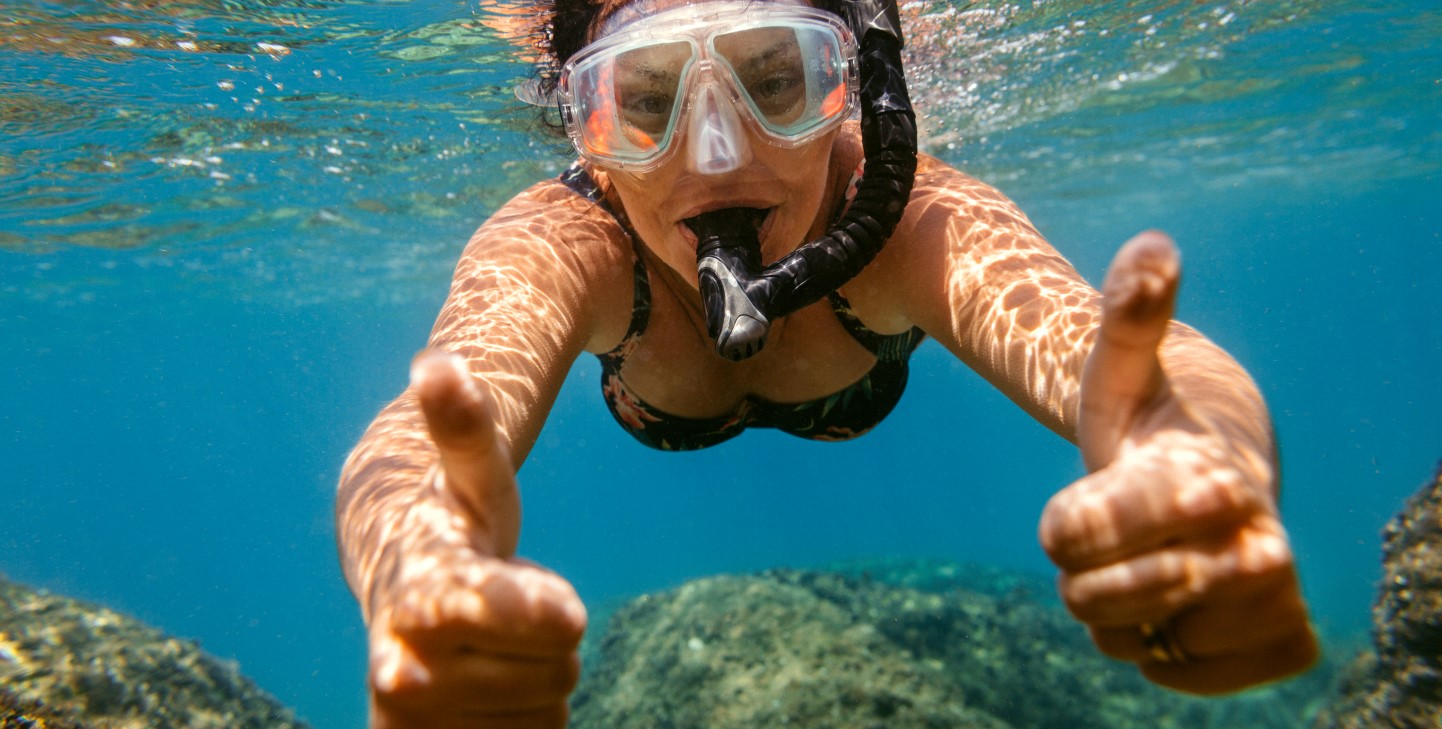From the postcard-perfect Coral Bay to the hidden beauty of Secret Cove, these spots promise stunning photos and unforgettable views.
GVI
Posted: August 29, 2024

Petrina Darrah
Posted: March 23, 2023
Tenerife, the largest of the Canary Islands, is a popular tourist destination for its stunning landscapes, warm weather, and beautiful beaches. However, many people are unaware of the incredible underwater ecosystem that surrounds the island. With crystal-clear waters and a diverse range of marine life, Tenerife offers some of the best snorkelling opportunities in Europe.
Tenerife’s unique position on the Atlantic Ocean and its warm climate make it an ideal location for snorkelling year-round. The island offers a wide range of snorkelling spots, from rocky shores to sandy beaches, each with its own charm and underwater landscape. Some of the best snorkelling spots in Tenerife include El Puertito, Los Gigantes, Radazul, and Abades.
El Puertito, located in the south of Tenerife, is a small fishing village known for its crystal-clear waters and rich marine life. The cove offers excellent visibility, making it an ideal spot for beginners and experienced snorkelers alike. Los Gigantes, located in the west of the island, offers a unique snorkelling experience with its towering cliffs and underwater caves. The area is known for its impressive volcanic rock formations and diverse marine life, including turtles, rays, and octopuses.
Radazul, located in the east of the island, is a popular snorkelling spot for its calm waters and variety of marine species. The area is home to several small reefs, making it an ideal spot for underwater photography. Finally, Abades, located in the south of Tenerife, is a picturesque fishing village known for its colourful marine life and underwater caves.
Tenerife’s underwater ecosystem is rich and diverse, with over 300 different species of fish and several species of whales and dolphins. The island’s unique geography and volcanic past have created a variety of underwater landscapes, including coral reefs, rock formations, and underwater caves. Some of the most common marine species found in Tenerife include damselfish, trumpetfish, sea bream, and moray eels.
Despite the richness of the underwater ecosystem, Tenerife’s marine life is under threat from pollution, overfishing, and global warming. To combat these threats, several marine conservation programs have been established on the island, including the program run by GVI.
GVI runs a marine conservation program in Tenerife. The program aims to protect the island’s marine life and ecosystem through research, education, and community engagement. The program is open to volunteers, who can join for a period of one to six months and participate in a range of activities, including snorkelling, diving, and marine conservation efforts.
Volunteers in the GVI program have the opportunity to learn about the underwater ecosystem of Tenerife, conduct research on marine species, and participate in community outreach programs. The program also includes a series of workshops and training sessions on marine conservation, research techniques, and sustainable development practices.
As a volunteer, you’ll get plenty of time in the water, discovering the marine ecosystems of Tenerife as you help collect valuable data on snorkelling trips and other excursions.

Snorkelling in Tenerife can be a thrilling and rewarding experience, but it is important to take precautions to ensure your safety and the safety of the marine ecosystem. Here are some tips to keep in mind when snorkelling in Tenerife.
When planning a snorkelling trip in Tenerife, it is important to pack the right gear. You will need a snorkel, mask, and fins, as well as a wetsuit if you plan to snorkel during the winter months. It is also a good idea to bring a waterproof camera to capture the beautiful underwater landscape and marine life.
When snorkelling in Tenerife, it is important to wear appropriate clothing to protect yourself from the sun and the cold water. A rash guard or wetsuit top can provide protection from the sun’s harmful rays and keep you warm in colder water. Don’t forget to wear sunscreen and a hat to protect your face and neck from the sun.
Snorkelling can be a fun and exciting activity, but it is important to take safety precautions to ensure your safety and the safety of the marine ecosystem. Always snorkel with a partner and never snorkel alone. Be aware of your surroundings and avoid touching or disturbing marine life. If you encounter a dangerous animal, such as a jellyfish or stingray, remain calm and slowly swim away.
Snorkelling in Tenerife is a unique and unforgettable experience that offers the opportunity to explore the rich and diverse underwater ecosystem of the island. From colourful coral reefs to underwater caves and rock formations, Tenerife’s underwater landscape is truly stunning. To protect the marine life and ecosystem of Tenerife, it is important to participate in conservation efforts, such as the program run by GVI. By snorkelling responsibly and taking precautions to ensure your safety and the safety of the marine ecosystem, you can enjoy all that Tenerife has to offer and contribute to its conservation.
By Petrina Darrah

From the postcard-perfect Coral Bay to the hidden beauty of Secret Cove, these spots promise stunning photos and unforgettable views.
GVI
Posted: August 29, 2024